Introduction: In this article, Melissa Davenport Berry continues her story about the punishments endured by the Southwick family at the hands of the 17th century Puritan authorities in the town of Salem, Massachusetts. Melissa is a genealogist who has a blog, AnceStory Archives, and a Facebook group, New England Family Genealogy and History.
My last story covered the plight of the Southwick family of Salem, Massachusetts, who were persecuted for their Quaker beliefs in the 17th century (see links at the end of this article). I continue today with the reprint in the Morning Star of Rev. Nathan Southwick Hall’s article “Martyrs of Puritan Boston: Governor Endicott and the Quakers.”

In the newspaper article, Hall cited court cases and historical narratives on the Southwick’s – Lawrence, Cassandra, and son Josiah – which can be found in the Records and Files of the Quarterly Courts of Essex County on the University of Virginia site.
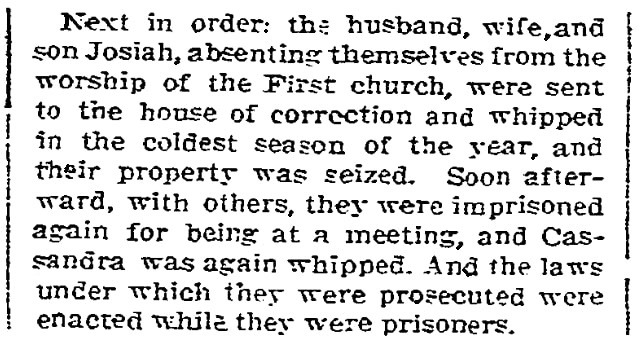
Hall noted that Governor John Endicott campaigned for more rigid laws that were passed against the Quakers, and claimed “Endicott was the prime mover of this Puritanic inquisition.” The Quaker religion was considered a crime of heresy, and for punishment “they were to be banished under the pain of death.” The Southwick’s, along with others jailed for the same crime, petitioned – but had no success. Lawrence and Cassandra fled to Shelter Island and died in the spring of 1660.
The Southwick’s were barely given time to prepare for their banishment.
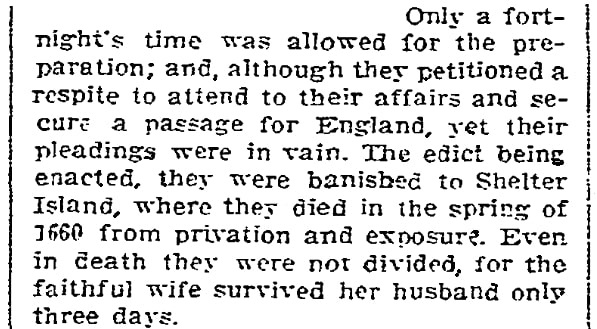
Hall, a direct descendant of Lawrence and Cassandra Southwick, was cousin to Frederick Fanning Ayer – who offered to fund a statue in Salem to honor the Southwick’s (see links at the end of this article). Both men felt strongly that the Quaker persecutions should never be forgotten, but to portray the Puritan authorities with an image of a ferocious tiger (as Ayer’s proposed monument did) just went too far for the city, and Ayer’s gift was declined.
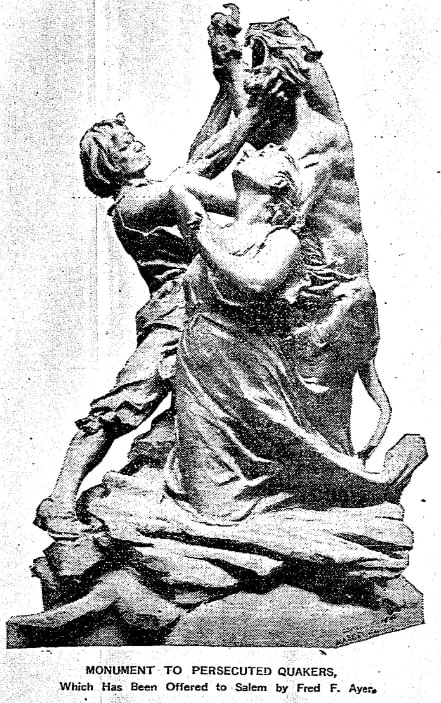
Ayer wrote a letter to Salem Mayor Joseph N. Paterson trying to convince him to allow a statue to commemorate the Southwick’s and all who endured the Quaker persecutions. The letter was published in the Boston Herald.
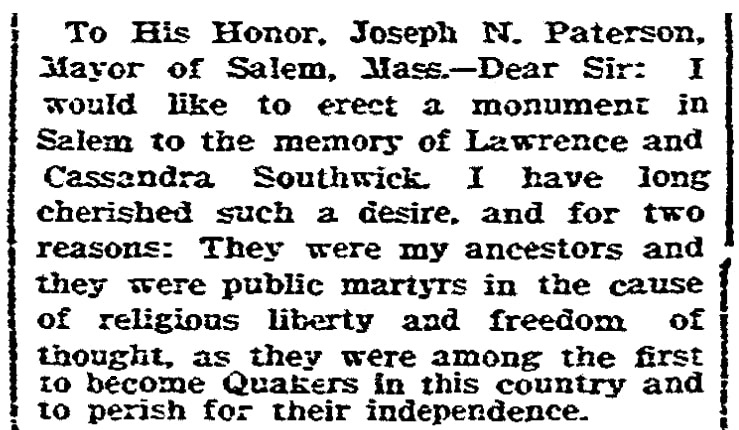
To argue his cause for such a monument, Ayer referenced two historical accounts on the Quaker persecutions. They are important for anyone researching their Quaker ancestors.
The first was John Gough’s A History of the People Called Quakers: From Their First Rise to the Present Time, and the second was a quote from Henry Chase, who asked:
“And today amid the enjoyment of civil and religious liberty are we not to look back with gratitude because of their faithfulness unto death?”
Hall was bent about the rejection of the statue and wondered if the tiger chosen to represent the Puritan authorities (more specifically, Endicott) should be replaced with a lamb to soothe the conscience of the protesting Salem Council!
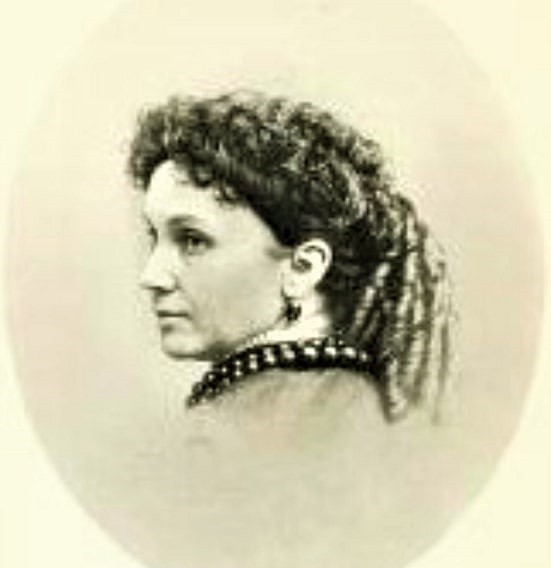
Ayer’s mother, Josephine Mellen Southwick Ayer, also wanted the Quaker persecutions to never be forgotten. In her memoir she writes:
“To such people who had the courage of their convictions, be the sacrifice what it might, the world today owes its release from an inconceivable barbarity of religious fanaticism, which had bidden fair to drag the world back to its darkest ages. Such Christian advocates as Endicott, once in power, have invariably sought to inculcate their message of peace and good will with the gallows and fagots in full sight. As for us who come after them to reap the harvest of their manful resistance, we who breathe an air of freedom because they played the parts of men and women to the last resort; we who live to think and act for ourselves because they died, let us not cease to shout their pains and rear their monuments, that the sweet memory of them may not perish from the earth.” p. 23-24
I found a wonderful tribute to Josephine, written by a close friend and published in the New York Tribune.
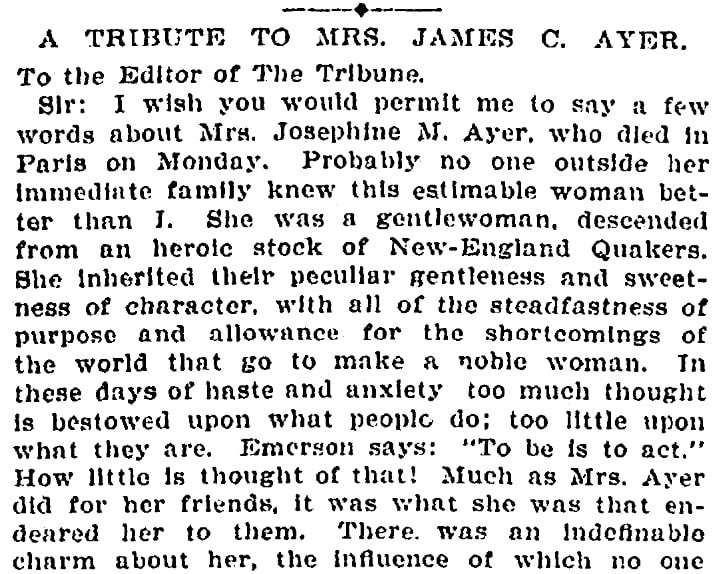
“She [Josephine] was a gentlewoman, descended from an heroic stock of New-England Quakers. She inherited their peculiar gentleness and sweetness of character, with all of the steadfastness of purpose and allowance for the shortcomings of the world that go to make a noble woman… She had all the pluck and determination of her Quaker ancestors.”
Note: Just as an online collection of newspapers, such as GenealogyBank’s Historical Newspaper Archives, helped tell the stories of the Southwick family, they can tell you stories about your ancestors that can’t be found anywhere else. Come look today and see what you can discover!
Upcoming: more about the Quakers in 17th century America.
Related Articles:
